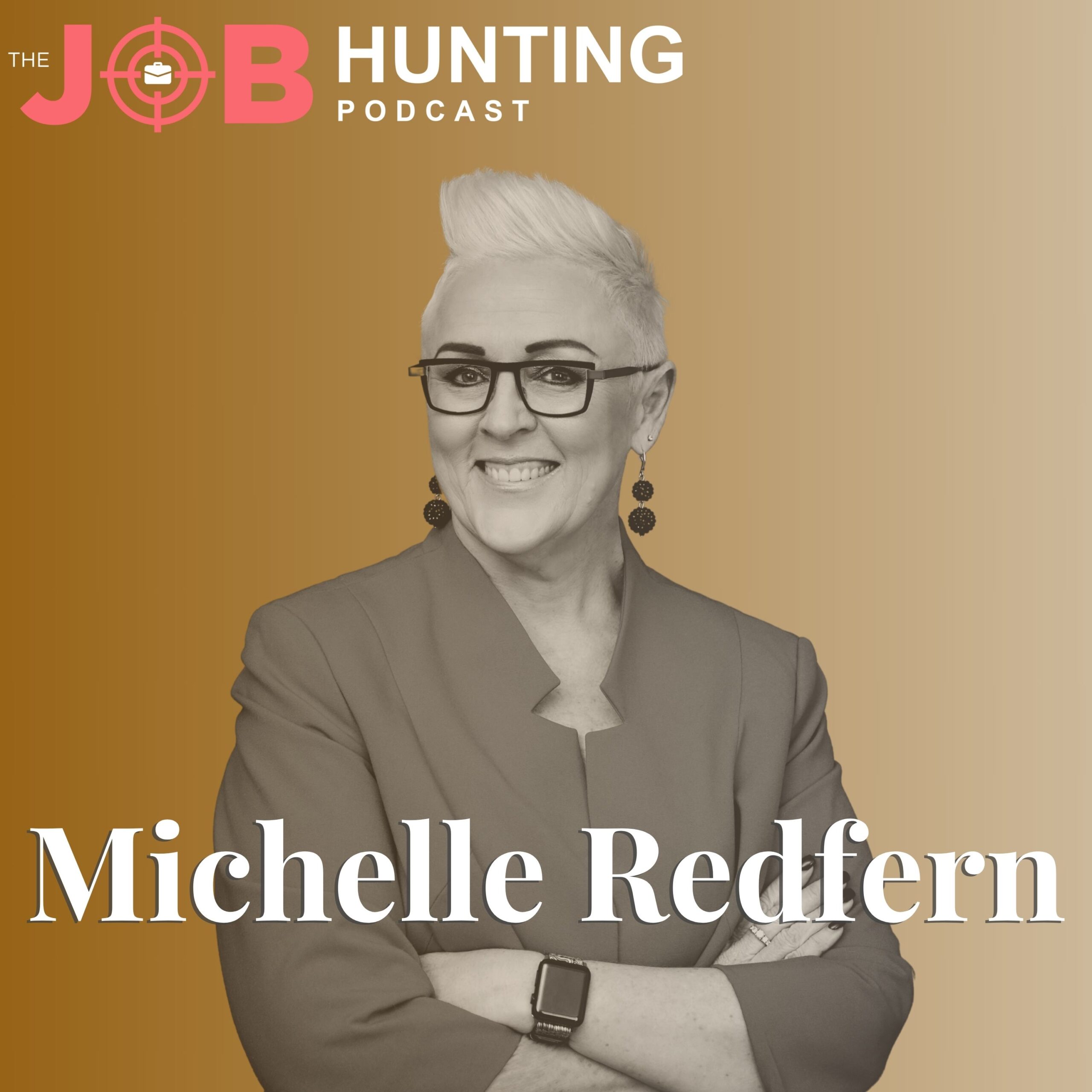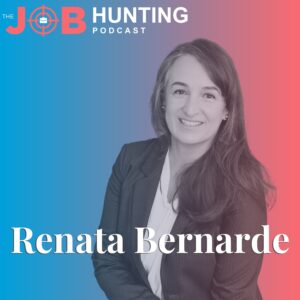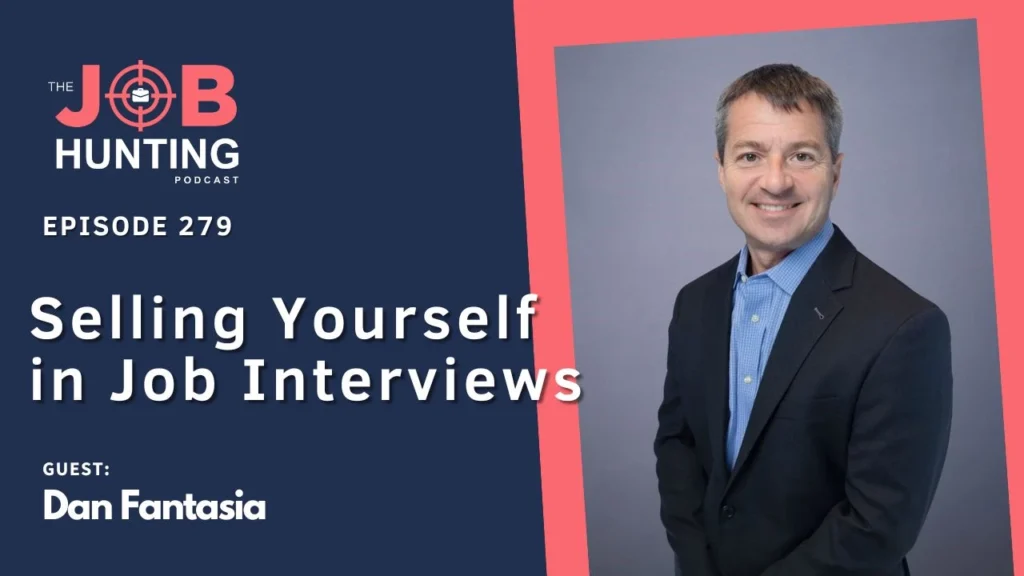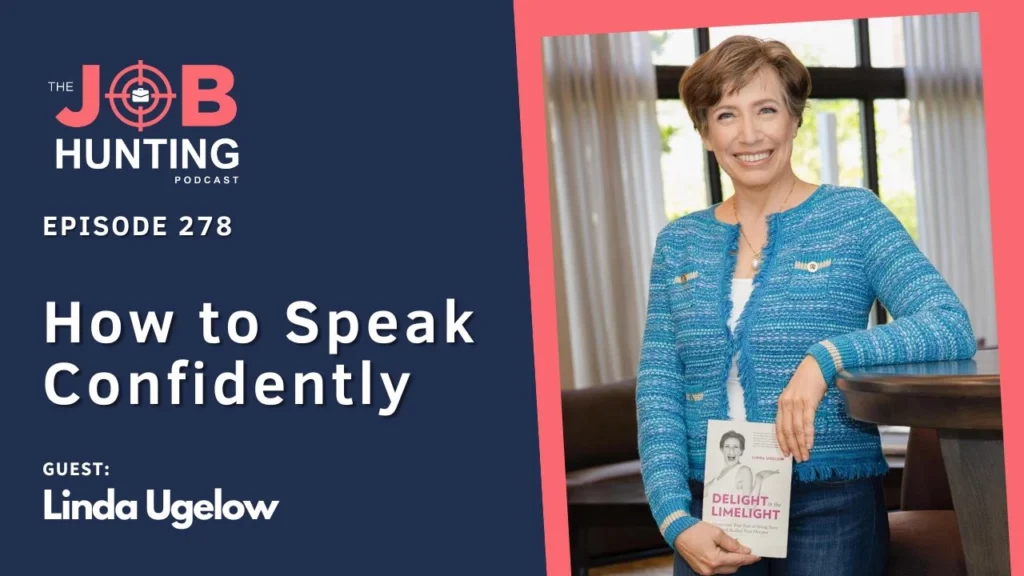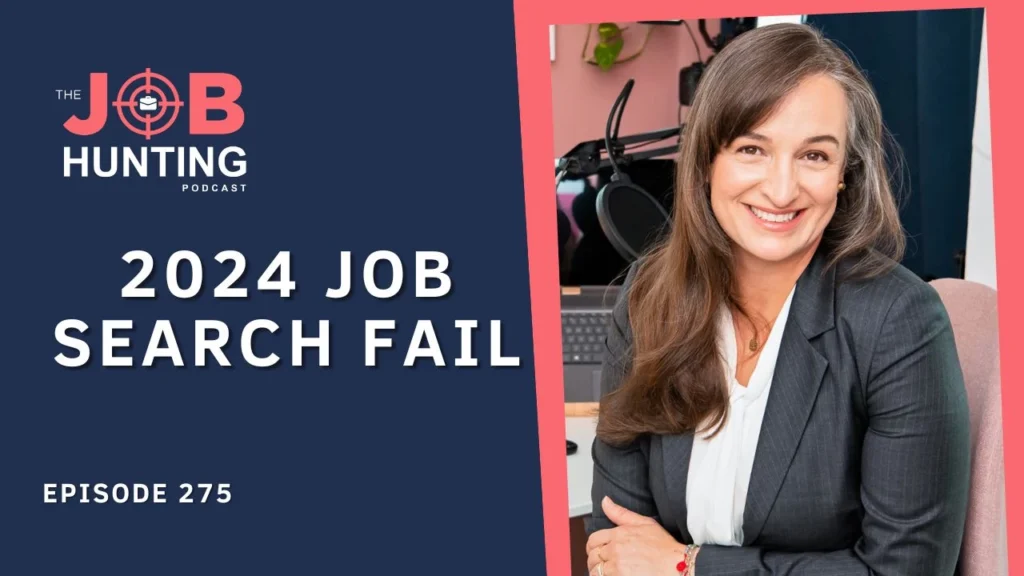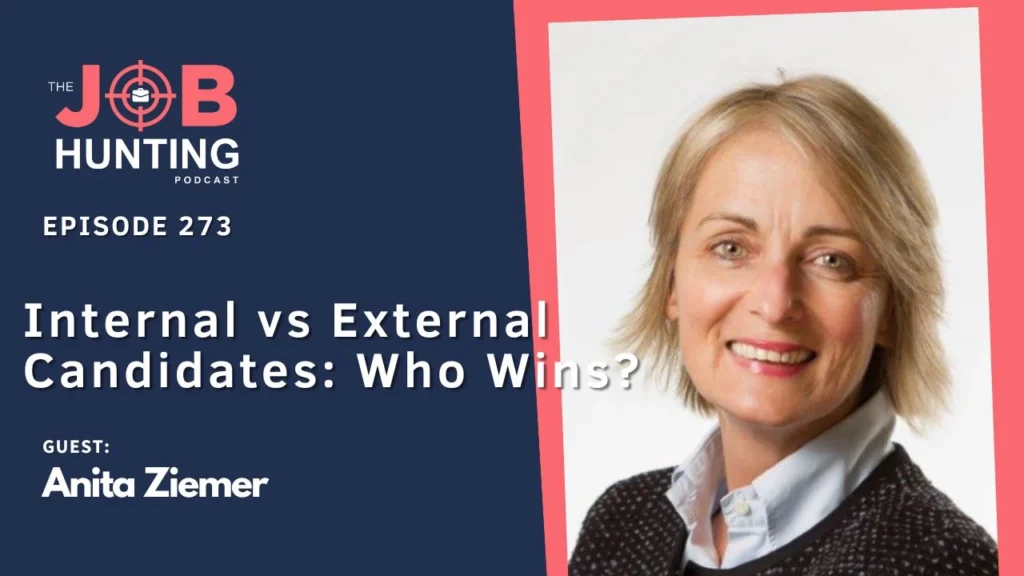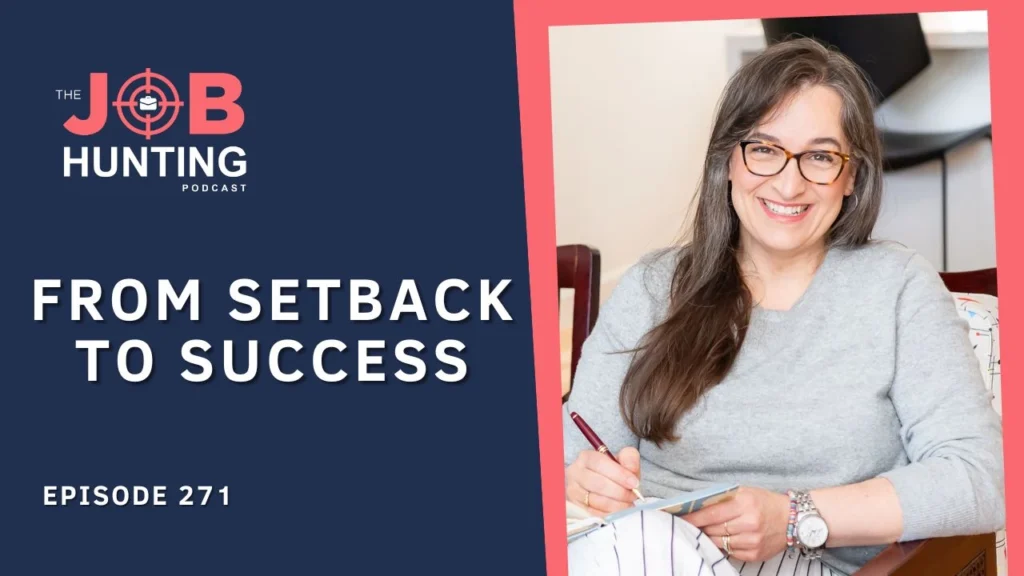Michelle Redfern (06:30)
Hello listeners, welcome back to the Lead to Saw podcast. I am like a dog with 10 tails today because I’ve got one of my favourite people, friend of the pod, friend of Lead to Saw Network and my friend Renata Bernadi here with me today. Hello friend.
Renata Bernarde (06:47)
So exciting to be here. I love technology linking us from a different part of the world. I love
Michelle Redfern (06:52)
I know well as we record I’m here in Narm which is Melbourne and it’s going to be about 35 degrees celsius today and Renata’s in London where it’s not 35 degrees well north of London where it’s not 35 degrees celsius she told me it just snowed and here we are it’s like we’re in the lounge room together having a chat wonderful
Renata Bernarde (07:12)
Yes, perfect technology. can hear you perfectly fine.
Michelle Redfern (07:16)
It’s wonderful. So for listeners who haven’t been introduced to Renata before, I’ll give a little spill, but then I’m going to ask you to sort of really give us your positional purpose. But to set this up, we’re going to do a two-parter. We’re recording a two-parter. So this one you’re listening to right now is part one around job hunting. And part one is going to be for leaders and
When you think about your role as a hiring manager, does that thought of, I’ve got to hire people, fill you with joy or dread? So we’re going to talk about that first. And then the other side. So next week, you can tune into Renata and I talking again about being a job hunter and particularly at this time of year. So as we’re recording and as the episode will go live, it is December 2024. And it’s a really
nerve-wracking time for job seekers because the world goes into holiday season. So we’ve got two parts in both sides of that equation, the hiring managers and the job seekers. But why am I talking to Renata about this? Because she is the job hunting expert. Renata has been hosting her own podcast and coaching and enablement practice for a number of years now. The podcast is called the Job Hunting Podcast.
She sends out a very, very useful newsletter every week, which often stimulates me to go, I’ve got to talk to Renata, which is why we’re here today. And she really helps close the gap for job seekers in what is becoming a, well, it’s a highly technical, highly advanced and highly competitive market. And I have seen her create some wonderful outcomes for both individuals and organizations in terms of
being able to navigate that complexity. So welcome, Renata. But when people say to you, hey, lovely to meet you, Renata. What do you do? What do you explain? Or what do you say?
Renata Bernarde (09:23)
Often young people ask me this, like really young, like, you know, children, because it’s so simple. I help people find jobs. I help people find jobs. That’s what I love to do. If they have an idea of what job they want, yes, it’s an easier job for me. If they have no idea, then there’s a little bit of career counseling and support in order to get their career on track.
or their plans ready before they go to market. And many times, I would say 80 % of the time, we need to go through that step first before we go to market. So that’s what I do.
Michelle Redfern (10:04)
Yeah, I love it. And you and I have talked often, but we’ve talked about the fact that we’re both living or we’re following our bliss or living our Icky Guy, is doing things that we love, that we’re good at, that the world needs and we can get paid for. So it’s that beautiful Venn diagram. And I certainly know people and particularly the women that we both know have had some
terrific outcomes because it is a process and there are technical skills and there are things to know about the process around hiring and being hired. So let’s kick off with the first part of the equation, which is the hiring manager. So many of our listeners and the women in our Lead to Saw network are managers and they have responsibility for talent management, which includes
sourcing or identifying sourcing, hiring the best and brightest talent. But you recently wrote in your newsletter and it did hit a little nerve with me and it reminded me of when I was a hiring manager of the, my god, I’ve got to do hiring. Now I think hiring differs, the processes differ.
depending what level you’re hiring for in the organization. But there’s no doubt that there would be a number of leaders going, my God, hiring is a pain in the proverbial. And I don’t love it, I just want the outcome. So you’ve written about why it feels like a burden, but importantly, what we can do about that burden and turn it into a joy. So the very first thing is,
Why does our heart sink when we think, my God, I’ve got to go to market for a job or a team or whatever it may be? Why does that happen?
Renata Bernarde (12:04)
I think that what happens and inside my coaching when I’m working with job candidates, we go through that for an entire module of my program because we need to stop navel gazing and think about the hiring manager, think about the HR department and when they invite agents to be part of it, the recruiters as well. It is so bureaucratic that…
process for most organizations. And if you’re working with a small organization when there is no bureaucracy, it’s still such a risky process to go through for them. Such a big, big investment to create a new role, to replace somebody, you know, with somebody new. The investment of time, commitment, onboarding, training and development, making sure that you hire the right person. And because of the performance aspect of the selection process,
which we still haven’t really figured out how to do it best, people put a facade up for sale that may not necessarily be the real authentic self, right? We all do that because that’s what’s required of us. And then of course it doesn’t work because that facade then goes away after the honeymoon period, after the probation period.
and then you’re stuck with somebody that may not be the right fit for your organization and vice versa, you could be the job seeker who steps into an organization thinking it’s the the knees bees and it’s not. So it’s such a difficult process to go through. It’s a wicked task for everybody involved, not just the job seeker.
Michelle Redfern (13:51)
I’m having a little itchy, scratchy moments here remembering that, and thinking, God, I’ve got to raise a request to replace someone. And I do recall even very senior at executive level thinking, okay, so I’ve got to replace because someone’s giving me their resignation, whatever it may be. And knowing that when I go for that approval to hire, it’ll be, well.
this might be an opportunity to see if we can stretch that role into other people’s or let’s not backfill it just now and see how we go. you’ve got to, so there’s all, for some organizations and particularly at this moment in the, you know, the worldwide economy where the belt buckles are being tightened, there’s that anxiety around, will they let me backfill this role? Yes. I think that’s number one. And number two, which I think is,
really, I don’t know, our thing is do we just blindly hurtle into getting us, you know, basically a warm body into the role? We just need someone irrespective of what our strategic goals are for the organization. And I’m reminded of a conversation I had just recently with the CEO of one of my clients.
client organizations. And we were having a listening session with one of the leaders in the organization, because that’s what he does with me regularly. Hint, here’s a hint, leaders, very good thing to do. And the leader, the CEO said, I’d like to get some feedback. And this person said, you know, you’ve got to help us slow down. And these are my words, not theirs. But you’ve got to help us slow down, because we have a vacant role, and we just go to market and get the first available third person.
in the context of what we were talking about, diversity, equity and inclusion. We forget all that stuff and we just grab the first, literally the first available person who looks and feels okay because we’re busy and we’ve got to get, you know, blah, blah, blah. But you’re suggesting that we should be stopping to say how might we grow and innovate better through this process. But then you’ve got this competing priority of, we’re busy, Renata.
and we need to have someone in that role, what’s your suggestion for hiring managers to help have that conversation? And I guess senior leaders to help have that conversation say, we need to be much more thoughtful and intentional.
Renata Bernarde (16:27)
So, think what has happened, I want to take a step back, which I find this all fascinating, right? The reason, the fact that you reached out to me because of a newsletter that I sent out and that newsletter had subscribers only information about a conversation that I had with a very, very senior captain of industry in Australia.
If you can think about the most conservative male, quite senior in corporate Australia, that’s the person that contacted me because of the previous newsletter that was also about hybrid work and the leadership that’s necessary to lead in a hybrid world. And to see that both of you from completely different parts of
the spectrum of Australians, corporate world agree about the fact that there is something wrong with hiring, says a lot about hiring. Fascinating. So what I think was fascinating about his, mean, he’s an incredibly smart guy and blessing, he was a great mentor to me for a long period of time. So really great mentor for me.
really, really supportive of my career. And he said, I missed the fact, I missed the time when we would hire people when we needed them, when productivity was going well and the company was growing. And in order for the company to grow more, we had to hire more people to do the same task or we needed to create a new department to deal with an innovation or a different creation.
that there was a straight correlation between need and supply and demand, right? Today, because of the way that we work with state departments, federal government metrics that are needed for the end of year results for shareholders, et cetera, et cetera, we sometimes hire and fire people at random. It makes no sense.
And to take that away from human resources, from AHA, that just disenfranchises everybody. So the leaders or the boards make those decisions, and then those decisions trickle down, and nothing makes sense anymore. And people lose the passion and the interest in the task at hand. And that’s why you end up hiring people that don’t fit the culture when you don’t pay attention to the
biases that exist within the process because you know that two years from now those people that you’re hiring you will be firing because they will have they will be made redundant in some sort of restructure. That’s the sort of ebbs and flows of corporate Australia and corporate everywhere really. And there is a mid-tier which is the mid-tier of clients that I have and you have in your community that are at the most risk.
They are not the workhorses at the bottom of the pyramid and they are not the senior executives making decisions. They are the mid-tier senior managers and they will be made redundant at some stage in their careers, maybe more than once, twice, three times, four times, right? Yeah, so I think I spoke too much, but I think that that is…
the real big issue now that we’re facing, but what we’ve noticed in 2024, and when I say we, I’m talking about myself anecdotally and recruiters that I spoke to, that I speak to, that I’ve been to do interview even this week, is that this seems to be bigger than just ebbs and flows. There seems to be a shift, a shift in how
Michelle Redfern (20:32)
distance.
Renata Bernarde (20:36)
hiring is being made or not made in 2024 and beyond. So we need to make sure that we wait until 2025 to see what’s happening. But companies are taking actually longer, Michelle, to make decisions, to go to market, to hire people. Sometimes they go to market and then they pull back and they decide not to hire anybody. It’s been happening a lot in the past 12 months.
Michelle Redfern (20:58)
So that’s
And I’ve certainly seen, yeah, there’s a number of different alleyways I want to go down here. one of them is I’ve seen on TikTok and others, because I love TikTok, but anyway, but on various social media platforms, including LinkedIn, the concept of the ghost job. And I know you’ve written about it as well, which is arguably
you know, well, it’s been presented as a highly unethical way that businesses operate to build up their, well, why do that? So a ghost job, an organization advertises a whole bunch of jobs or a job with no intention of actually filling it, and which is obviously heartbreaking for those who invest their time and emotions into applying for it. So those ghost jobs, that’s been a thing.
that I have certainly paid attention to over the course of this year. Why does that occur, Renata, do you think? Because that’s one of the things that I think is odd.
Renata Bernarde (22:10)
Yes, that occurs so that, well, there are reasons that are not so unethical, and then there are reasons that are really unethical. If people want to look at the job hunting podcast, if they go back to Halloween time, I think there are one or two episodes where I talk about two types of ghosting, the ghosting where you are ghosted by recruiters. And that’s very common and very true. And then the ghosting and the job that are
that don’t exist, right? And quite a few articles have been written in 2024 about this and articles that were written because there was research that came out that showed that that was true because I hear this from job seekers time and time again, but I hadn’t sort of seen research or any sort of analysis about it, but it is true. So if you’ve gone through this, you are not going crazy.
Organizations that do this, they may just put out an ad to see the talent out there. Yep. To check and see what’s, you know, is there still talent to be harvested, to be acquired in this specific area? Let’s put a call out and meet with people or at least receive their CVs to check if we can develop this department or
this area of expertise in this country or this state or this city. So they’re still in development stage, but they need to understand if the…
Michelle Redfern (23:48)
they’re doing a talent scan, in other words. Yeah. And I do, I have a really, I think it’s a, given that you and I work with people who are looking for jobs and, and we know, and particularly those senior, mid and senior women who are looking for jobs who find it absolutely frustrating. I think there’s, coming back to what your, your client has told you around, just need to reimagine this, this whole, way we’re doing things. I think
If we’re doing a talent scan, because we’re potentially going to build a department or whatever, I think there’s a different way of doing it. But the other thread I want to pull on is, so here’s a tip, leaders. If you’re going to post, if you want to do a talent scan, do it properly through, I guess, a very ethical talent partner. Because they’ve got ways of tapping their networks by saying, you know, let’s see who’s out there rather than putting up a job ad that gives people hope.
that can’t be fulfilled. But the other one is, you know, it’s workforce planning. You know, I come from a contact center background, so my workforce planning, I guess skills and bias is very strong. Organizational design is a core, one of my core competencies because I spend a lot of time, particularly in the business process outsourcing world, making sure that I have the right people in the right place at the right time in my contact centers for my clients.
which meant you had to forecast demand and be able to flex up and down as demand flexed. So that’s, but you know, we’re talking about frontline here. For you and I, we’re talking about the mid-management. Organizations do have to restructure. There’s no doubt about it. We have to restructure orgs to continue to go from good to great, to maintain our competitive edge, to flex with innovation and things like that.
I think restructures and roles being made redundant are, they are a part of business life. I’d like us to get better at them in organizations. But if that is true, then how does that help hinder, bring joy or a burden to hiring managers and what can we do about it?
Renata Bernarde (26:11)
Yes. I’m still thinking, I want to answer that, but I’m still thinking about the ghost jobs because I want to go back to that before we move on, because there is a different type of ghost jobs that affects most of the people that we see, my clients in your community. And those are the unethical ones where you invite people in and you ask them to present.
Michelle Redfern (26:19)
Okay
Renata Bernarde (26:38)
and they do a presentation, you know, something about the strategy or develop a new product or something, and they never hire anybody and they just steal your idea. And this is a big deal for me. I’m very angry about this for my clients because my clients are senior people. They’re busy. They have more stuff to do than to be preparing strategies for free. And we have, in fact, it was my son
created this for the first time and he was very young when he used it. But we have done NDAs to prevent people to use your ideas, right? So yeah, because it’s very common for job seekers to sign NDAs when they go into a very senior job search for an executive role. It’s very common that they sign an NDA. I have never heard of job seekers asking the company to sign an NDA.
Michelle Redfern (27:16)
Good afternoon.
Renata Bernarde (27:37)
preventing them to share or use the ideas or information that will be shared in the interviewing process. And I think it’s time for us to take control of our careers. And now I can go straight into the question that you’ve asked me about restructures. From a job seekers perspective, you just need to know that you will always be a highly regarded professional
if you’re in or if you’re out of work. The fact that you have gone through a restructure and you don’t have a job should not prevent you to believe or know in your heart that you are a great marketing manager, financial controller, whatever it is that you are.
Michelle Redfern (28:21)
And to interrupt there what I often say to the women that I work with is your role was made redundant. You weren’t made redundant. it’s a bit of a mindset thing as well.
Renata Bernarde (28:35)
Yes,
yes. You’re absolutely right about workforce planning though. this, I think you’re right about restructures, of course. And we will see a rapid update on workforce planning as AI takes over some of the manual tasks. And we as corporate professionals need to be ready for that.
A lot of the things that we have hated doing, we can’t complain too much because the things that we didn’t like doing will be replaced by AI. And we will just need to be better at and more sophisticated in our understanding of our strengths, right? So I think when we go, when we’re thinking about the HR professionals in
Going back to the newsletters that you’ve read, all of this started because I think it’s really important for us to understand what leadership is about at this day and age of remote and hybrid work and work that is ever changing in terms of structures and what’s needed for the organization to move ahead in times that are in complete volatility.
But that will come also from everybody knowing what their strengths are, knowing what they’re good at and having that empowerment. So the professional development of stuff that is staying or stuff that is leaving in terms of doing some sort of strength training, understanding what’s in their toolkits, their capabilities, their competencies.
for them not to be confused. This sounds so simple, doesn’t it, Michelle? How hard it is for people to know what their strengths are, to know.
Michelle Redfern (30:30)
It does.
Renata, you’re, you’re singing, you’re singing my song here. And, and, know, but I also want to say that that’s an organizational thing as well. And I want to, there was a really, so the CFO Summit, the Australian Financial Review CFO Summit has been on this week in Australia. And Nathan Goonan, who’s actually a former colleague of mine from, from the NAB, who is now their CFO, was talking about AI and said, you know, I am paraphrasing, we’ve got to get real here.
you know, we’re all expecting this massive uptick in productivity. But we actually need to understand what our current productivity is and how it’s going to uptick. And part of that for me, exactly what you’re saying is, what are people doing right now? What are they going to stop doing as a result of introducing artificial intelligence tools and techniques? And how much better are they going to get at other stuff? And of course,
productivity is just not faster. It’s actually developing, growing, innovating, know, all and it’s the, to a large degree, the knowledge work. So I think there’s, and part of it is saying, what are the things that you are really good at? What are the things that can be automated or delegated, whether it’s to another human or to a machine? And let’s start doing more of that strength based stuff. But
You’re right. And for organizational leaders listening, if we come back to hiring, are your managers joyful about hiring or not? And data, anecdotal and otherwise, suggests not. What are we strong at and what are we weak at? And what do we need to improve in this process so that we can help shift the mindset of our leaders around hiring and get much, much better outcomes?
Because at the end of the day, this is about avoiding what you said at the start of our chat, hiring the wrong person, then having to move them on, whether it’s through whatever mechanism in a couple of years or less, because they’re not, they’re actually not the right person for the job. So I think that strength-based approach is super important for both individuals and organizations.
Renata Bernarde (32:55)
Yes,
yes, yes, of course. I think that organizations, we had this discussion a few months ago in Melbourne. was a boardroom full of people from, you know, companies in Melbourne, HR professionals, and we were discussing the hybrid world, right? Now, this is the thing.
Everybody’s complaining. mean, from an employer’s perspective, they are complaining that people don’t want to come back to the office, right? And it’s affecting their culture. I challenge that. I think our culture was already challenging to begin with, right? So when you then put that challenging culture, challenging environment under this new hybrid world of remote work, then things fall apart.
Michelle Redfern (33:52)
It’s a simple stress test of anything, isn’t it? Exactly.
Renata Bernarde (33:56)
So
it was quite hard for me to be diplomatic in that room because it’s not me saying that, it’s not anecdotal. This is research-based. This is important work that people in HR and leaders should be reading about. So I became quite nerdy in the boardroom and I brought to them two management theories that I…
think are very applicable for this day and age, even though they are very old. And one is the link between technology and human factors. And that social technological research is over 100 years old. It started when big mining equipment were brought to mines here in the UK. And all of a sudden,
productivity went down. Productivity went down. That was like in the 30s, I think. And people then started researching this. And of course it broke down the social interactions between the miners. The fact that they were digging the mine together and having those great interactions that they made a difficult job, a terrible job at times, enjoyable for them because of friendships and the community that was developed.
All of a sudden, you have noisy machines, and you have to be alone inside a machine digging. And you lose that sense of community. All of a sudden, the productivity went down for years. It had to have interventions for it to go back up. Did we go back to using a shovel to mine? No. So I think this is what employers need.
Michelle Redfern (35:45)
fascinating. is, and you know, I’m actually doing that big noisy machines in our homes, in our home office, you know, not into it. It is just fascinating. What was the reaction?
Renata Bernarde (35:59)
I was a research officer for a research done in Melbourne. It was Melbourne University and one of the big health departments, you know, the Southern Health, Eastern Health, one of those. can’t say which one because I think I’m not supposed to say. However, what was happening was nurses were given tablets and they were given all of these sort of
technology to use. So nurses weren’t supposed to go up to the fifth floor of the hospital to ask for medication anymore and take that break and that breather between hard work and hard work that could, you know, and go upstairs and ask that lovely person that took care of the meds, how she was doing and how was her engagement going? No, they had to do it using this bloody tablet that they hated, right?
So you see what I mean? Have we gone back? No, we haven’t gone back. So we need to adapt to things as they come, with the good and the bad. Right now, is badly not working hybrid, but most job seekers want to work hybrid. And recruiters and HR professionals are the agents in between trying to manage those expectations from employers that, like Amazon, you know, announced.
late 2024, wanted everybody to come back in. To be terrible for their culture if they start opening exceptions, if they start opening exceptions for somebody with a disability or for a very high performing individual or for somebody who has moved into a state they will be given maybe a year, you and then everybody else will resent it and then all hell will break loose.
Michelle Redfern (37:25)
Mm-hmm.
That’s I’ve spoken, written, advised my clients a lot in this, particularly this 12-month period about the way we do work. know, work is something we do, not a place we go to. And the thing that I say, and it is so aligned with what you’ve just said, Renata, is we need to teach leaders how to be leaders in the new world, which is the current world, not the world, you I often say, I joke.
When I started work 947 years ago, your supervisor made sure that you turned up, of did your widgets and went home safe. We, as leaders, we have so many more responsibilities now, but we have to enable leaders with the right tools, with the right technology, with the right training, but also the right expectations and mindsets about the way we do work. So bringing that back to,
helping leaders have more joy around hiring, because it is necessary. We cannot, we cannot, and I would counsel very, very strongly against putting the complete hiring process into the hands of AI. We cannot not help our hiring managers do that. What’s a couple of tips now for, I guess, if it’s the HR directors, the talent and sourcing team, both internal and external,
What can they do to help hiring managers feel better and be better in this process?
Renata Bernarde (39:20)
think we need to do maybe a sentiment survey of the candidates, the talent pool, to understand that if you want this type of talent coming into your organization, these are the sort of expectations that they have. Some of it will be around salary, but as we know since the pandemic, salary is not as important as it used to be. It still is, but somebody will accept a lower salary to work from home.
And those sort of flexibilities that before the pandemic were so rare, hardly ever given, now is really expected. You have to be mindful of that. The other thing too is to understand that you are hiring for skills, right? So job ads that are…
ridiculously put together and I’m not blaming recruiters or HR. I think it’s a combination of both, but it’s probably people that have no training that put together a job description or an ideal candidate representation that does not exist. have a client that just-
Michelle Redfern (40:38)
about the super person or the unicorn, you know, the laundry list of everything I’ve ever wanted in a human being. Is that what you mean? Yeah.
Renata Bernarde (40:45)
That’s
what I mean. And that is so bizarre. I have a client who got a job and her role had been advertised for months. I believe it was over eight months. she got this role not because she was a superhuman and a unicorn, but because they gave up on looking for somebody and she’s doing just fine. They love her. You know, she’s, you know, highly regarded.
extremely productive, efficient, et cetera, et cetera. They would never hire somebody that they were looking for. They did not have to settle for her. They just needed to be realistic. So I think that understanding what’s out there in the market and vice versa, many times people put consultations with me and they say, oh, want to do, I don’t know, business transformation.
I’m just coming up with this word. say, well, have you seen any jobs with business transformation in the job title? Let’s have a look on LinkedIn and you look and there’s nothing. So it goes both ways. The job seeker is unaware of what the demands are and the HR department and the hiring managers are unaware of what the job market pool is for them.
Michelle Redfern (42:07)
So to be really crystal clear, I think there’s a job here for both on all sides of the hiring manager paradigm. So whether it’s the HR business partner, the talent and sourcing team, but also the hiring manager to say, what do we really need here? And I would suggest that…
If as a leader you haven’t got a skills matrix for your team, you should have one. We have them for boards and they are highly effective. And you Google skills matrix and you’ll find them everywhere. And you really document what are the skills and attributes required to deliver the outcomes that my team has to deliver for the organization. And then you do a bit of a map because there’s going to be no one person that does everything right.
And then you go, OK, so we’ve got a gap in this and that this is the person we need now. We need a person who’s got strong interpersonal skills, relationship management skills and is an engineer, for example, whatever it may be. And you go on high for that. And I think if I put my gender equity lens on or hat on, I should say, what that also does is say, hey,
We’re not looking for the unicorn, super person, ninja, whatever, know, superlative you’d like to use. Women, please apply, because this is within your purview. This is within your skill set. So it’s going to attract more applications, I would have thought, Renata, if we get much sharper around these job ads and job descriptions.
Renata Bernarde (43:48)
absolutely. Definitely. also the other thing that I think is important in addition to understanding the pool of talent and how hiring needs to happen and how the onboarding and training and development needs to happen for them to join your organization. It’s also to make the whole process more human.
that with with an ATS system an applicant tracking tracking system I’m not saying you don’t need the software what I what I’m saying is that
It’s not really about artificial intelligence or machine or software. That’s not what I mean by more human. mean, understand the vulnerability of the people involved. So be less demanding of them showcasing some sort of executive presence or professional presence that you think.
the ideal candidate for that position needs to have. Many times, Michelle, I have found that the interview process that we have established as the benchmark for recruitment is not ideal to hire certain types of individuals or certain types of roles, right? So there are roles in the organization that can be very well filled by people that are shy and introverted and neurodiverse.
They will be just fine doing that job. They can be leaders. can be colleagues. They can be part of a team without putting on a show at the job interview.
Michelle Redfern (45:38)
I love that.
Renata Bernarde (45:40)
That is another thing that I used to do when I was in the corporate world that I think HR leaders can do with the hiring managers is to prepare them, right? Prepare the panel, the selection panel to be more accepting of people that come from different backgrounds, to don’t expect everybody to look like them, to hire people that are different.
because that will be so beneficial for the organization. And I don’t think that the interview process is an ideal process for some individuals to go through, right? Yeah, so I think that…
Michelle Redfern (46:23)
Well,
certainly, I think, you know, that for those long-time listeners, you will have heard us interview Erica Jefferson earlier this year and talk, and one of her lines, which I keep repeating is, going for a job shouldn’t be like an episode of The Hunger Games. you know, so for hiring managers or for organisational leaders now, you know, what I can summarise here is let’s plan much more effectively.
so that we’re not having those knee-jerk reactions. And I’ll add another one in there. I think there’s a lot of internal talent-sourcing teams who have got time to fill targets, which are the antithesis of what we’re trying to do here. So, greater planning. I think let’s help leaders be great by training them on the new ways of work, whether it’s looking at
you know, as we talked about hybrid work, remote work, but also the interview process. How are we going to be high EQ leaders and really help people bring their best self to the hiring process? We want to get the best out of this person opposite us, whether it’s on a screen, in a room or whatever it may be. And then I think the other thing that you’ve said, Renata, also is, you know, let’s
look at just the whole, you know, all of the job ads and the, you know, stop trying to hire the unicorn, the super person, the ninja, whatever it may be. So they’re three really great, really great, you know, categories of to-dos for organisational leaders to help all your hiring managers think of hiring as, well, maybe they won’t think of it as a joy, but let’s help them not have a sinking heart every time they go,
Oh no, I have to go to market for a job because that’s important. We want people to be in great places with great bosses and this is a really big part of it. Renata Bernadi, thank you for your wisdom and listeners, tune in next week because we’re going to have a talk about the flip side. What happens if you’re a job seeker at this time of year? So tune in, but Renata, thank you for your wisdom as always.
Renata Bernarde (48:46)
It’s my pleasure, Michelle. Thank you.

